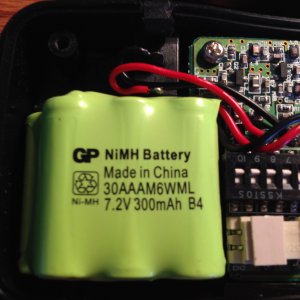- Joined
- Jan 23, 2012
- Messages
- 1,216
i have misplaced the charger for my dog training colar and transmitter. i opened the transmitter and there it says 7.2V nmh on the battery pack. what specs on a wall wart would work as the replacement charger ? i found a 7.8 volt one on evilbay for less than $12, where the factory supplier sez upward of $40 for the direct replacement which is quite a bit higher priced than i expected to pay.
is this similar to talking about car chargers where a 12 volt battery needs 13+ volts to charge ? ?
is this similar to talking about car chargers where a 12 volt battery needs 13+ volts to charge ? ?


